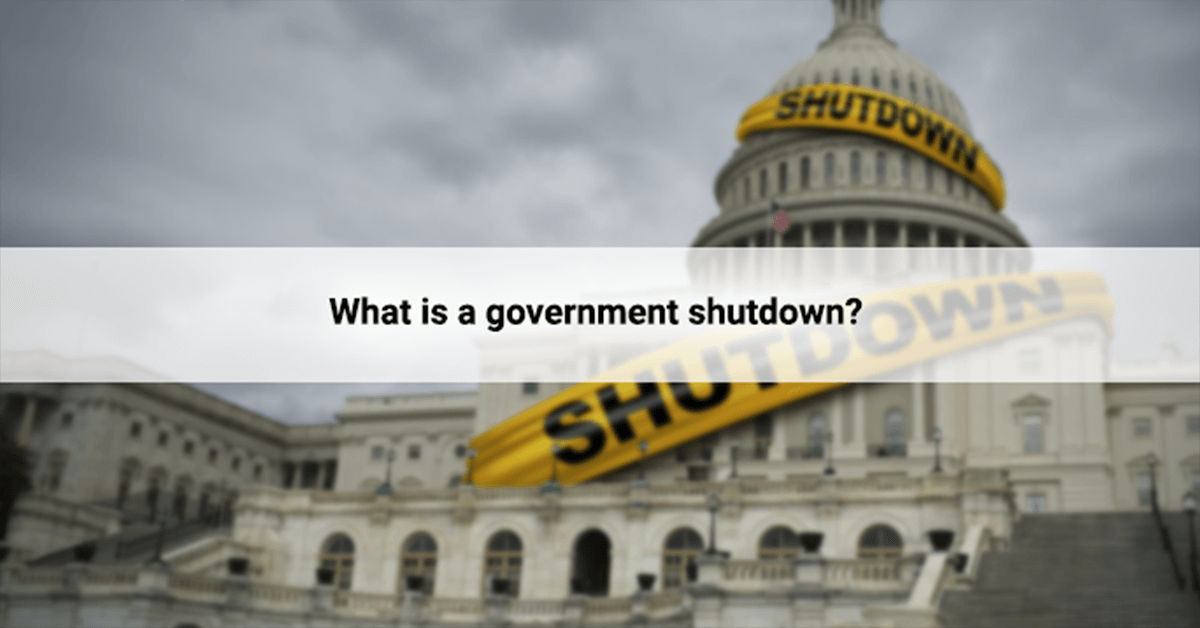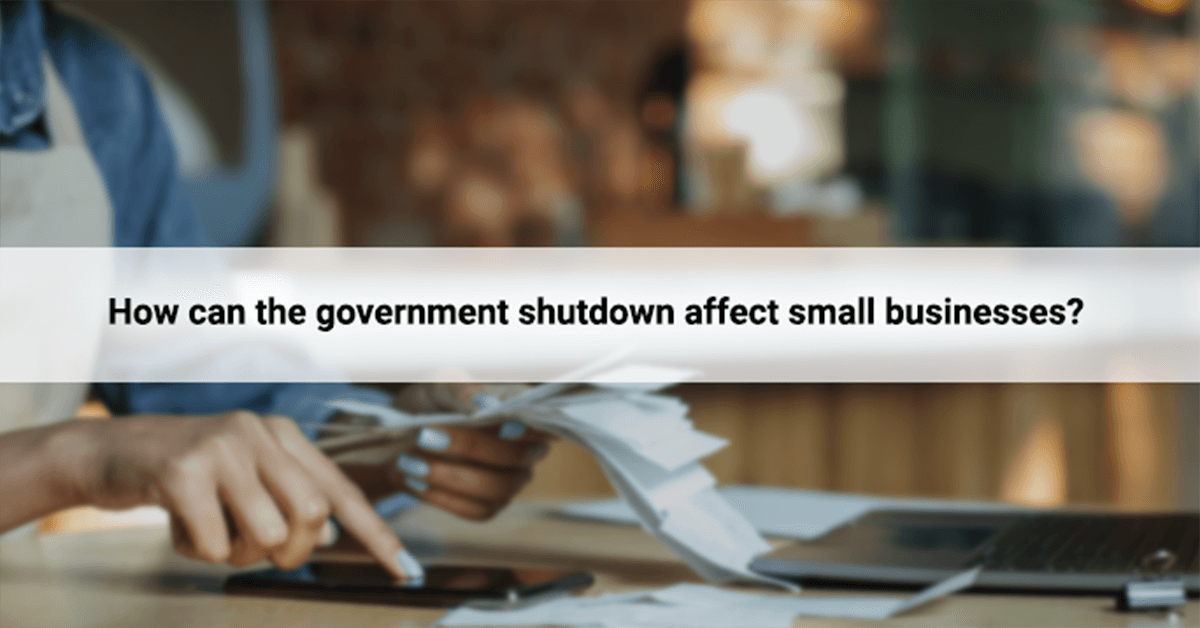There’s no doubt that shutdowns cause an immediate impact on many business owners, especially those who depend on financial aid and contracts. When a government shutdown occurs, certain federal agencies close, which means fewer opportunities for contractors, small businesses, and sole proprietors.
However, if you are aware of its potential effects on daily operations, you and your business can be proactive, decide effectively, and minimize impacts. This is especially true for essential businesses allowed to continue operating, such as warehouse clubs and grocery stores.
The lengthiest government shutdown in U.S. history lasted for 35 days under Trump’s presidency. The shutdown ended when Donald Trump and Congress agreed to temporarily reopen shuttered agencies without addressing the president’s border wall funding.
In this post, you’ll find answers to the most common questions regarding the matter. Read on!
The latest news on the government shutdown: The Congress passes stopgap funding to avoid a government shutdown temporarily
The U.S. Senate passed stopgap funding after receiving threats from Republicans that could cause a damaging government shutdown. The Senate voted 65-27 to continue federal spending levels through March 11.
The federal government would have experienced a costly shutdown, lost thousands of employees, and closed offices if the bill were not passed by Friday midnight, when existing funds were set to expire most of the federal government operations.
The House of Representatives passed the bill for stopgap spending text last February 8, which president Joe Biden also signed into law. The funding also gave lawmakers more time to achieve a long-term spending package to cover through September 30.
Illustration by Lightspring/Shutterstock
- It is when the federal government stops working due to disagreements about the federal budget for the fiscal year.
- It can result from a lack of funding with delays in the federal budget approval. Congress must approve the money allocation, so it must pass legislation to keep federal programs running the entire year.
- When the government shuts down, nonessential federal agencies stop operating, which will result in unpaid wages of government employees and nondelivery of services.
- Not all federal operations will immediately stop because some organizations have cash reserves to continue running until they run out of money and are forced to close as well.
- Shutdowns may occur at different levels: local, state, and territorial. However, “government shutdown” usually refers to the federal government.
Table of Contents
How to avoid a government shutdown?
Government shutdowns can be prevented in two ways:
1. Passing appropriations
2. Continuing resolution
The senate appropriations committees and the House must pass a total of 12 appropriation bills separated by subject areas based on funding levels in the budget resolution. The president should then sign it before October 1. The House will pass the continuing resolution on September 21st to extend current funding levels until December 3rd and suspend the debt limit till the end of the year.
Photo by Gajus/Shutterstock
Small business owners have a considerable impact on the economy as they are job creators and entrepreneurs for startups. However, when the government shuts down, it’s often hard for them to get loans or other financial aid from banks and institutions because most of them rely on federal agencies for guidance and government funding.
Here’s what to anticipate anytime the government shuts down:
1. Nationwide airport delays
During the 2019 shutdown, the federal government was blamed for delays in flights at major airports in New Jersey, New York, Atlanta, Orlando, and other states, CNN reported. The shortage of employees at critical air traffic control centers resulted because most of them were not fit for duty and made routine mistakes onsite.
So, business employees planning to go on international work would be forced to reschedule their trips. However, the state department did not cease issuing passports during times of shutdowns except for the expected delays. This is very common in passport offices operating in closed federal buildings.
2. Limited IRS accessibility
The IRS is one of the most important agencies for small businesses. It provides tax filing assistance, advice, and tax code interpretation. If it’s closed during a shutdown, business owners will have fewer resources at their disposal when dealing with complicated questions about filing taxes and interpreting tax laws until it reopens.
3. No FDA approvals
Food and Drug Administration employees have been furloughed due to a lack of funding, which means no approval of new drugs or medical devices until the shutdown ends.
4. Businesses losing sales
Many businesses rely on federal contracts and grants for funding, so they often feel the government shutdown’s effects first. For example, small businesses may lay off workers until the shutdown ends. Large companies that rely on federal contracts may halt research projects until they receive money from the government again.
The Bureau of Labor Statistics listed the top industries most affected by government shutdowns:
- Personal services
The decreased business has impacted personal services such as beauty salons and spas due to a lack of funds. However, furloughed federal employees were granted free nail services and haircut and massage treatment during the shutdown.
- Restaurants and bars
Many restaurants rely on tips from large customers for a large part of their income. During a shutdown, many people aren’t able to eat or don’t want to spend their limited funds on restaurants. According to CNBC, the congressional budget office gauged a loss of $11 billion due to shutdowns.
- Travel
Airlines lose money due to cancellations of flights and delays of incoming flights that can’t get out of their gates at airports because they have limited TSA agents who can provide security clearance.
As the New York Times reported, some theatre performances were canceled due to a lack of federal financing. However, other theatres offered big discounts for federal employees and individuals to get away with shutdown dramas.
5. No OHSA inspections
The Occupational Health Administration won’t inspect workplaces during a shutdown unless inspections are related to worker deaths or injuries or anything on its priority list that happened during the shutdown period.
However, the shutdown won’t affect operations in 26 states and two territories with state plans. So, they will continue with routine operations.
6. Zero small business loans
The Small Business Administration (SBA) provides financial assistance to small businesses through loans, loan guarantees, and other financial aid. The SBA can’t issue new loans during the shutdown unless Congress passes legislation authorizing activity.
Also, lenders can’t submit loans for approval for SBA processing, and they won’t receive 7(a) loan numbers because the SBA’s authorization is on hold.
7. Delayed benefits
Some employees receive benefits from the federal government, such as unemployment insurance or Social Security payments. If those agencies are closed during a shutdown, they could lose out on these payments if they are delayed or stopped altogether.
Photo by Prostock-studio/Shutterstock
The U.S. government shutdown has overblown many businesses, impacting their owner’s credit and loan applications, potentially their personal finances, and ultimately how they operate in current markets. The shutdown of government functions could send the U.S. economy further into recession. Here are ways it can affect small businesses:
1. Fishing industry
Commercial fisheries are heavily dependent on federal funding. The National Oceanic Atmospheric Administration (NOAA) funded $300 million in fisheries aid to territories, states, and tribes as a part of the CARES Act.
During the government shutdown, permit renewals experienced delays at the Southeast Regional Office in Florida during Trump’s presidency.
In addition to halting permits, NOAA’s website was inaccessible, and the latest weather warnings couldn’t be published, which left many people uninformed of the latest critical weather conditions, including monitoring ocean temperatures and currents.
2. Economic growth loss
The longer the shutdown lasts, the more damaging it is to small businesses and employees. Since many of them are struggling to make ends meet, this could be devastating for many families and could have long-term impacts on the economy overall.
Because small business owners are less likely than large corporations or individuals to have access to 401(k) plans and other investments that can weather market downturns, they tend to be hit harder by economic downturns like recessions and government shutdowns than others, especially if they are already running on tight profit margins.
3. Government contracts
Many small businesses depend on government contracts for their livelihood, but with the shutdown in place, those contracts will be on hold. According to a report, it may cause contractors up to $200 million daily and about $1.5 billion per week, and the funding revenue crumbled,
During this time, affected agencies will not award new grants and funding opportunities. However, some agencies, like the National Science Foundation, continued to accept proposals online through grants.gov unless they have issued proposal extensions in lieu of the shutdown.
4. National park economy
The National Park Service is accountable for more than 300 million visits each year to its 417 national parks, monuments, and other sites across the country. In addition to these visitors, the NPS employs about 20,000 permanent employees who work at these sites and additional 45 subcontractors who support them during peak season.
The impact of a partial government shutdown on small businesses that rely on tourism has been significant. Small businesses that operate within national parks have had their businesses severely impacted by the lack of tourists visiting them during this period.
The National Parks Conservation Association estimated that the NPS lost $400,000 per day on entrance fee revenue, which harmed a few of the most popular and largest national parks, which earned 80% of the revenue from entrance fees and using them for maintenance and operations, including the:
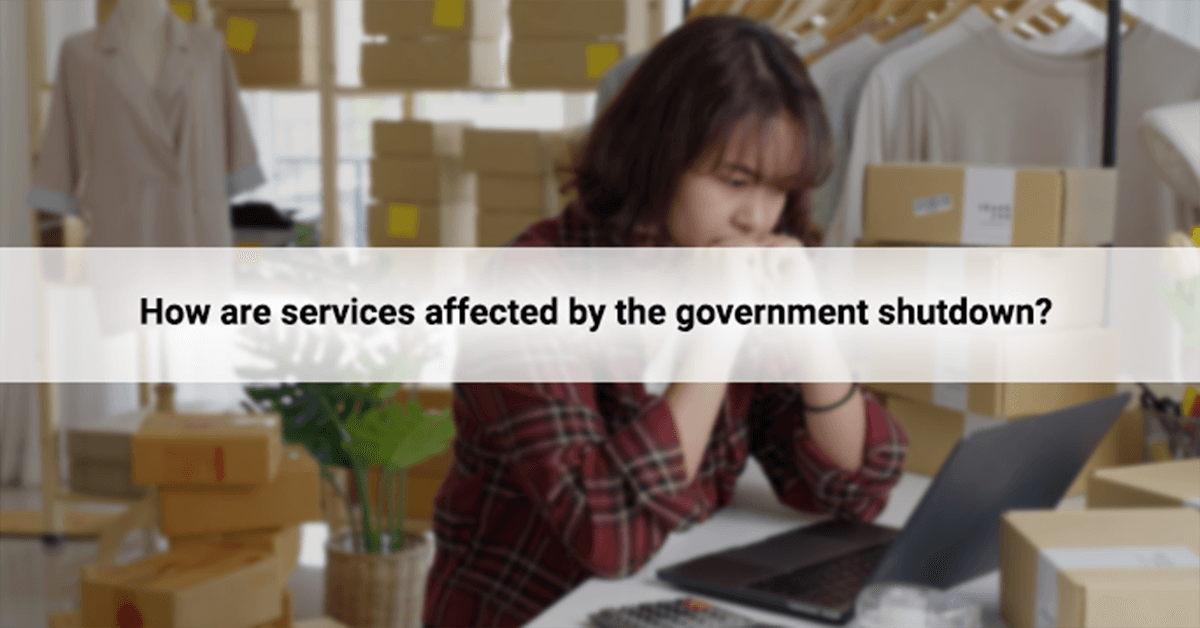
A government shutdown can have widespread effects across all levels of government, including law enforcement agencies and other emergency services. If a state or local government agency is closed during a shutdown, it may be unable to provide services such as health care, disaster assistance, or housing assistance.
Health & Human Services
The centers for Medicare and Medicaid would continue to pay claims and administer benefits. However, it wouldn’t be able to process new applicants. During the shutdown from 1995 to 1996, over 10,000 Medicare applicants were put on hold daily.
Supplemental Nutrition Assistance Program (SNAP)
This program is the largest food assistance in the U.S. for the marginalized and provides benefits to millions of Americans each month. It’s also one of the programs that would not be immediately affected by a shutdown because it’s funded through mandatory spending.
However, if the shutdown goes on for several weeks or months, it could eventually affect SNAP recipients if states have to cut back on their own funding for the program due to a lack of federal funds.
Internal Revenue Service (IRS)
Shutdowns have affected taxpayer services at the IRS because many IRS employees are not paid to work during these times. Also, almost 26,000 IRS employees were furloughed but recalled to work during the shutdown from 2018 to 2019 to prepare for the tax season, but nearly half did not return to work without pay.
Social Security
Social Security is an essential service and will let people continue to claim their SSA check and Social Security. However, the issuance of Social Security cards is halted, and no new applications will be accepted during a shutdown.
Photo by fizkes/Shutterstock
When the government shutdown is finally over, small businesses will still be left with the task of preparing for another possible shutdown in the future, here’s how:
1. Keep tabs on election time and vote wisely
A government shutdown is a political issue that requires political solutions, so it’s important to find out who the representatives are and what they are doing about this matter. There are ways to find out who they are. You can either check the election office’s website or Congress’ website.
For example, if you live in New York City, then the representative may be Alexandria Ocasio-Cortez, who has been vocal about working toward the ending of the government shutdown. Know that representatives change over time, and ensure your keep tabs on what they are saying.
2. Work on extra credit
Banks and lenders may be less likely to extend credit during a shutdown because they don’t know what tax returns will look like or whether customers will be able to pay them back in full when the government reopens.
To avoid getting stuck with bad debt, establish and maintain extra credit before the shutdown takes effect so you can access additional working capital when needed.
3. Broaden your customer base
If you rely heavily on government contracting, diversifying your customer base can help reduce the impact of a shutdown. Look for opportunities with other companies in your industry and consider diversifying your client base. This could mean focusing more on private sector clients and looking into other areas of your business, such as retail sales or e-commerce, rather than focusing exclusively on government clients and contracts.
4. Look for other funding resources
If you have access to private investors or grants, consider applying to them now before they’re unavailable during a shutdown. It may also be wise to apply for other types of loans if you haven’t already done so.
Photo by Rabbitti/Shutterstock
Before 1980, several funding gaps took place but hardly resulted in shutdowns. It was thought that Congress wanted agencies to keep working, and they went with it. At present, the federal government has shut down 17 times since 1976, with the very first occurrence happening in the same year. Here’s a list of the most recent shutdowns in U.S. history:
1. President Bill Clinton’s Term
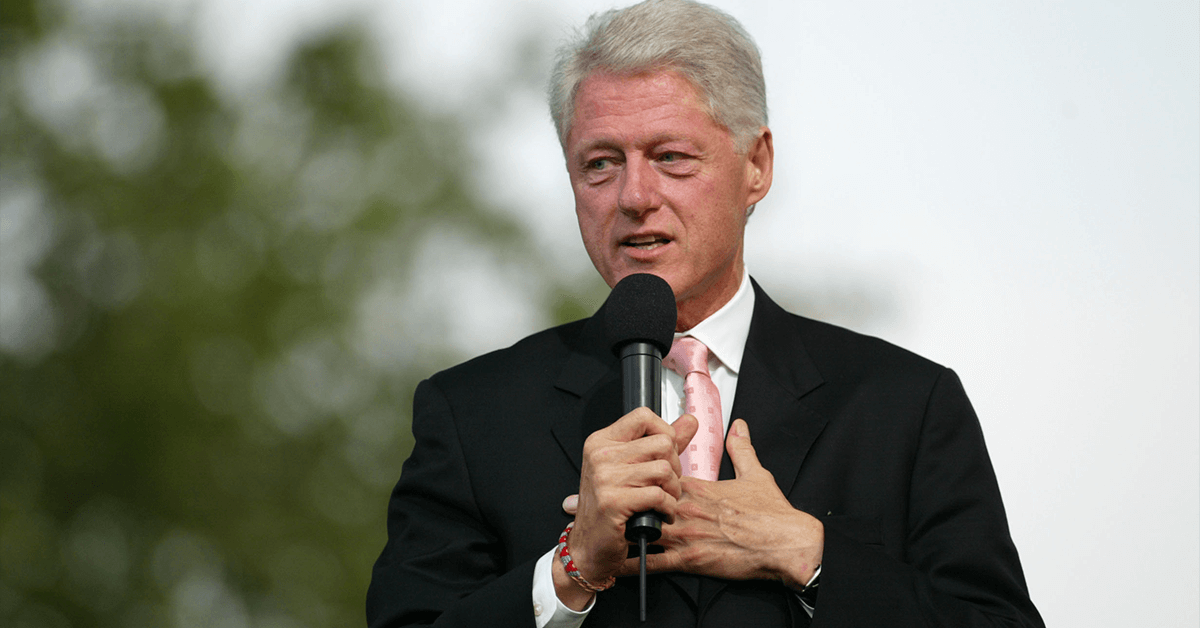
- Date: December 5, 1995 to January 6, 1996
- Length: 21 days
Republican leaders ordered the White House to propose a budget plan for the next seven years reflecting the Congressional Budget Office’s economic forecasts instead of the Office of Management and Budget‘s, which was more ideal.
The dispute centered around funding for Medicare, education, national parks, and more. The proposed budget by the president was $115 billion behind the Congressional Budget Office’s estimates. It was resolved when the Republicans gave way and passed the legislation to keep the government working. Also, Clinton vetoed a balanced seven-year budget plan.
2. President Barack Obama’s Term

- Date: October 1 to October 17, 2013
- Length: 16 days
The government shutdown of 2013 was the first time in 17 years that the federal government had been shut down. It took place from October 1 to 16, 2013. Also, the reduced government spending lowered the gross domestic product by 0.3%.
According to the report of the congressional research service, it caused the following:
- Furlough of more than 800,000 federal employees
- This amounted to $2.5 million in lost productivity
- Cost the government more than 6 million days of work
President Barack Obama and congressional Republicans could not agree on funding for budgetary issues such as Obamacare, which is health insurance for all American citizens.
It further resulted in the closure and partial shutdown of many government services and agencies. Some national parks, museums, and monuments were closed, while others remained open with limited access.
Following the govt shutdown, Congress passed the Continuing Appropriations Act 2014, providing back pay for furloughed employees who did not receive paychecks during the shutdown period. Obama signed it the following day, on October 17, which ended the shutdown and suspended the debt limit through February 7, 2014.
3. President Donald Trump’s Term
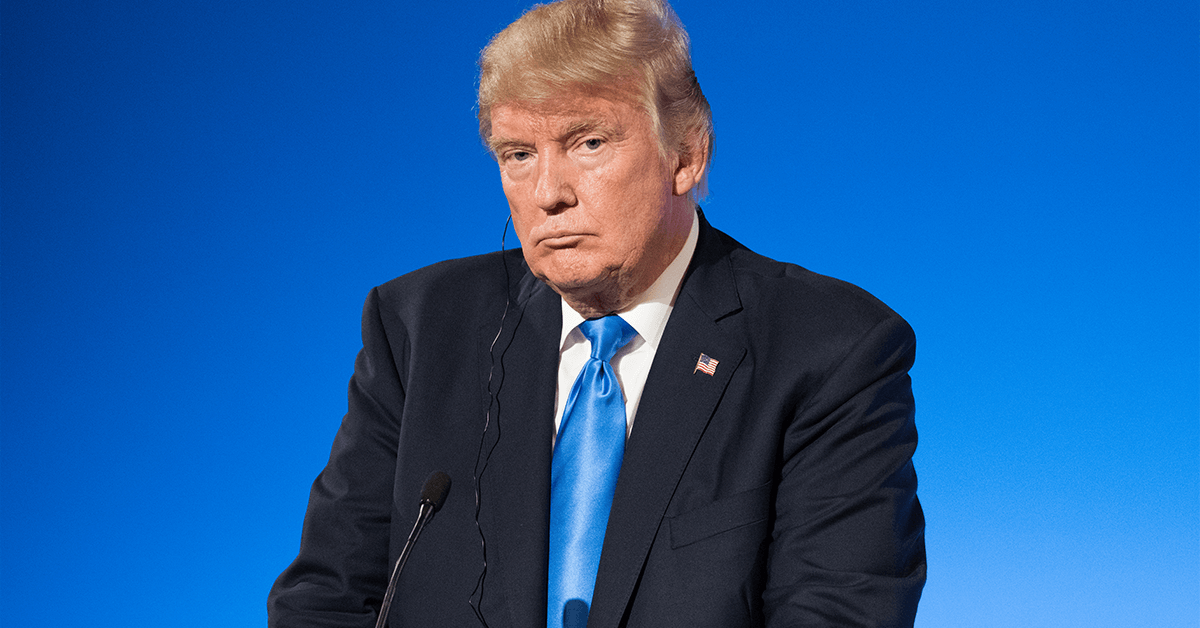
- Date: December 22, 2018 to January 25, 2019
- Length: 35 days
The government shutdown under Trump’s presidency was the longest in U.S. history. It began when President Donald Trump refused to sign any appropriations bill that didn’t include $5 billion for the U.S.-Mexico border wall. The amount was about 0.5% of the government-funded discretionary spending each year and 0.1% of the country’s annual budget.
The democrats were in charge of the House of Representatives at the time and refused to pass spending bills with border wall funding. The shutdown lasted for 35 days and cost the country’s economy $11 billion and a permanent loss of $3 billion, as reported by the congressional budget office.
It ended on Friday, January 25, after the president and Congress agreed to a bill to reopen the government for three weeks.



